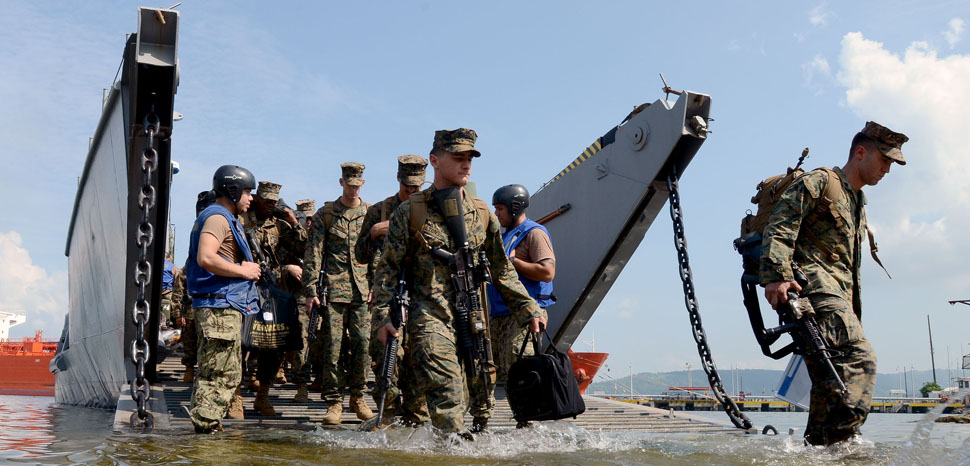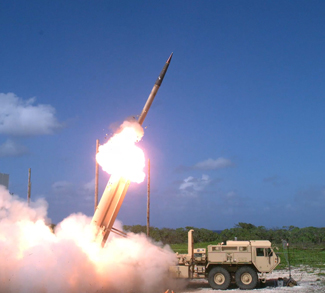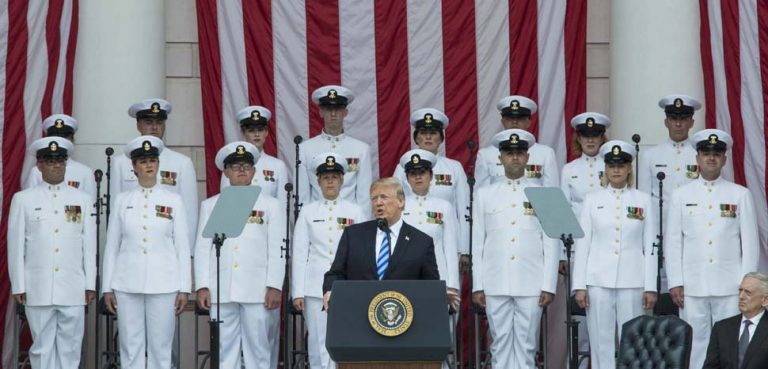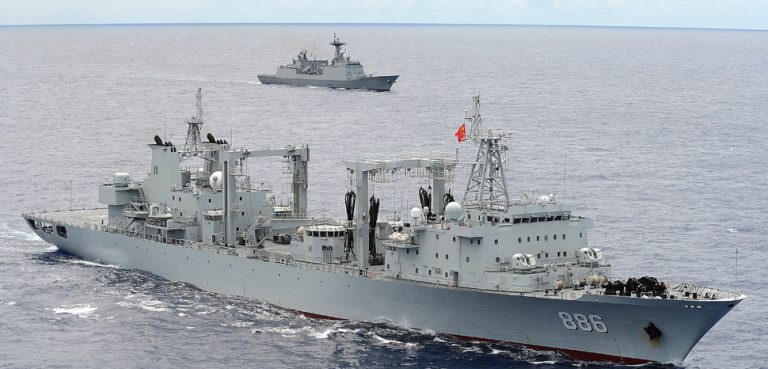On 11 February, Philippine President Rodrigo Duterte provided formal notice to the United States of his decision to scrap the Visiting Forces Agreement (VFA) – a bilateral treaty inked in 1998 to facilitate the presence of US troops in the country. Duterte’s Foreign Secretary Teodoro Locsin had voiced his concerns over the risks of cancelling the agreement in a Senate hearing the previous week, warning the move could result in the ‘severe curtailment’ of America’s long-standing defense obligations to its former colony.
Many observers have questioned the sense in Duterte terminating an agreement that has for the past 22 years underpinned what is arguably Washington’s most strategically important security alliance in Asia. The immediate trigger appears to be the US decision in January to rescind a visa for Ronald dela Rosa – a senator and close political ally of Duterte, who in his former role as national police chief led Duterte’s violent anti-drug campaign; roundly criticized in the West over alleged extra-judicial killings.
The visa revocation drew an angry response from Duterte, who immediately threatened to cancel the VFA and barred members of his cabinet from travelling to the US. Yet the visa issue may have provided a convenient excuse for Duterte, who has executed a pivot away from the US and toward China, since his shock election win in 2016. Duterte has routinely denounced US influence and criticized US foreign policy, claiming it has treated his nation ‘like a dog on a leash’ since the end of American rule in 1946.
Immediate and practical impacts of VFA termination
The termination of the VFA will take effect after 180 days, meaning the status-quo will be maintained until mid-August when the agreement is scheduled to expire. However, US-Philippine defense ties will not cease to exist when the six-month deadline is reached, as the two countries have two additional defense agreements, which are set to remain in place. A Mutual Defense Treaty (MDT), signed in 1951, commits the US to come to the Philippines’ aid in the event of an attack by a foreign power; while the 2014 Enhanced Defense Co-operation Agreement (EDCA), penned during the Obama administration, introduced new provisions for troop rotations, the use of military bases, and the positioning of assets.
While these two agreements are important in their own right, the VFA is vital to their implementation. It provides a legal framework for US troops to enter and exit the country without needing a passport or visa, and provides clear procedures for handling issues and disputes which may arise as a result of American presence. Above all, the VFA is a crucial tool in facilitating regular joint exercises between the two militaries. Around 390 such exercises are planned for 2020, the largest of which – referred to as Balikatan, meaning ‘shoulder-to-shoulder’ in the local Tagalog language – is due to be held in May.
The continuation of these drills after the 180-day period ends would be uncertain in the absence of a replacement for the VFA. After Duterte’s decision, US Assistant Secretary of State for Political-Military Affairs, Clarke Cooper, said joint operations would be ‘put at risk’, emphasizing that ‘all engagements’ require a facilitating legal mechanism to be in place. Foreign Secretary Locsin said as much during the Senate hearing on 6 February, noting that the VFA was the ‘substance’ that made the MDT effective.
Long-term strategic implications of terminating the VFA
Beyond these logistical issues, terminating the VFA has two significant implications for the Philippines’ national security – which may also impact regional security and wider US interests in the Asia-Pacific.
Firstly, a permanent US military presence in the Philippines, enabled by the VFA, serves as a deterrent to Chinese maritime assertiveness in the South China Sea – labelled the West Philippine Sea by Manila. Over the past decade, Beijing has reclaimed land and built military installations on contested islands in the region, where control of various portions of the sea and its features is disputed between China and five other claimant states. The area serves as a vital route for global shipping and seaborne trade.
The US has sought to push-back against Chinese maritime expansionism, for fear Beijing could assert full dominance and displace the US as the foremost naval power in the Asia-Pacific. In this sense, the Philippines is ideally located – on the sea’s eastern perimeter – as a staging post to guard against this perceived threat. The VFA, in allowing the permanent presence of US troops, has ensured a base from which the US can project power and launch freedom of navigation operations in the South China Sea. While the US does have close ties with other claimant states – such as Vietnam, on the sea’s western fringe – the relationship with the Philippines is long-established and it is considered a crucial partner. Terminating the VFA may give China the green light to continue its activities in the sea unchallenged.
Secondly, the VFA has enabled two decades of counter-terrorism co-operation between US forces and the Philippine military on the troubled southern island of Mindanao, where extreme Islamist groups, such as the notorious Abu Sayyaf, operate. The area is also home to a number of other hardline groups linked to the Islamic State, including the Maute Group and the Bangsamoro Islamic Freedom Fighters. In the aftermath of 9/11, the US deployed 600 soldiers to the region to help stem the tide of militancy, and around 100 remain stationed in Mindanao on a rotating basis. Although they don’t participate in active combat, US personnel provide intelligence and reconnaissance support, which played a key role in ending the 2017 siege of Marawi, when Philippine forces battled Islamist militants for five months.
The US has also provided equipment, financial assistance and urban-warfare training, helping to boost the capacity of the Armed Forces of the Philippines (AFP) to tackle rapidly-evolving terrorist threats in Mindanao. Several senior Filipino politicians now fear that by scrapping the VFA, the desire of the US to provide such assistance may decrease, risking worsening instability in the insurgency-prone south. Foreign Secretary Locsin stated last month that the VFA ‘allows for continued support for addressing non-traditional security threats’, adding that US forces had been ‘instrumental’ in not only combating terrorism, but also in helping to confront ‘trafficking in persons, cyber-attacks…and illegal narcotics.’ Security issues aside, US humanitarian support and disaster response has also been aided by the VFA.
A shared interest in renegotiating the VFA?
Despite senior figures in his administration voicing their concerns, Duterte appears intent on sticking with his decision. He has pushed back against those ‘trying to save’ the VFA, voicing a desire to ‘rely on ourselves’ in the defense sphere. Meanwhile, US President Donald Trump responded to reporters with apparent indifference when asked about the move, remarking ‘I really don’t mind…we’ll save a lot of money’. Despite these assertions, some Filipino politicians have stated a preference for the VFA to be reviewed rather than scrapped, and the 180-day notice period may afford time for negotiations.
It is in the interests of both parties to maintain the kind of co-operation that the VFA facilitated, even if the agreement must now be revived in a different form and under a different name. A renegotiation of aspects of the VFA as part of a new deal, acceptable to both Duterte and Trump, may be possible if both men opt to put the shared security interests of their respective countries ahead of political gain in the domestic sphere – where their populist bases are largely supportive of an isolationist approach to foreign policy. Longer-term, the future of the US-Philippine security alliance will be passed into the hands of new leaders: Duterte’s single six-year term ends in 2022, while Trump is seeking re-election in November. A US-friendly leader in Manila, or a Democratic president in the US, would likely lead to a return to the more engaged Obama-era relationship between the US and its Southeast Asian allies: centered on strengthening security partnerships, and opposing Chinese actions in the maritime realm.
Yet with Duterte and Trump at the helm, the US-Philippine security alliance appears to be weakening; and with the VFA set to be terminated, the defense establishments of both countries will hope for no lasting damage.




